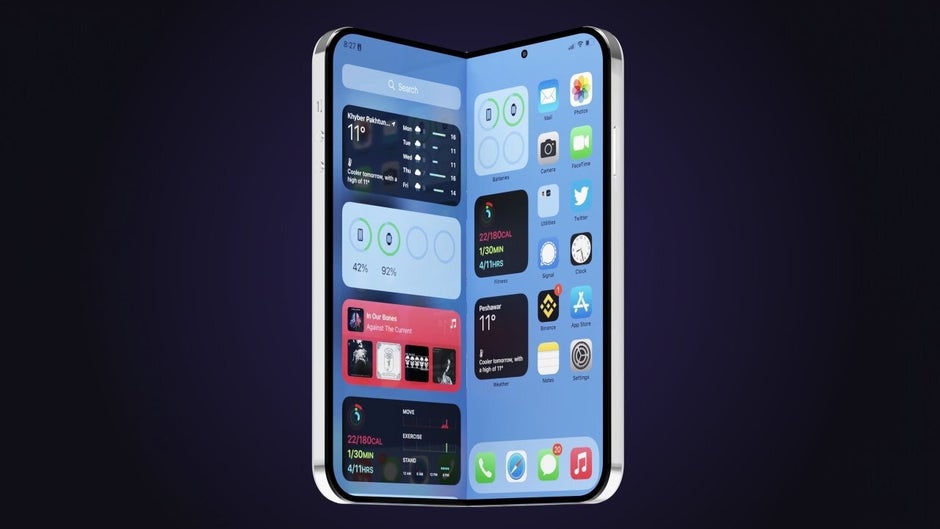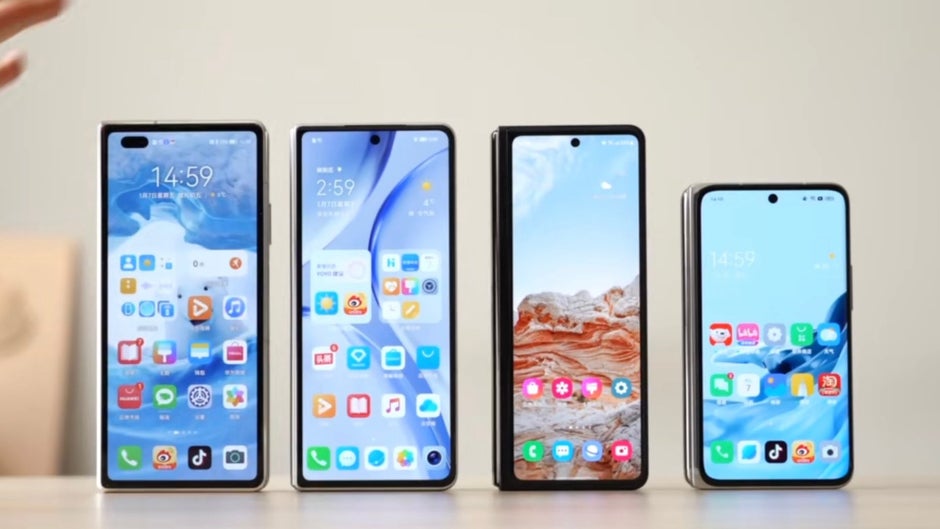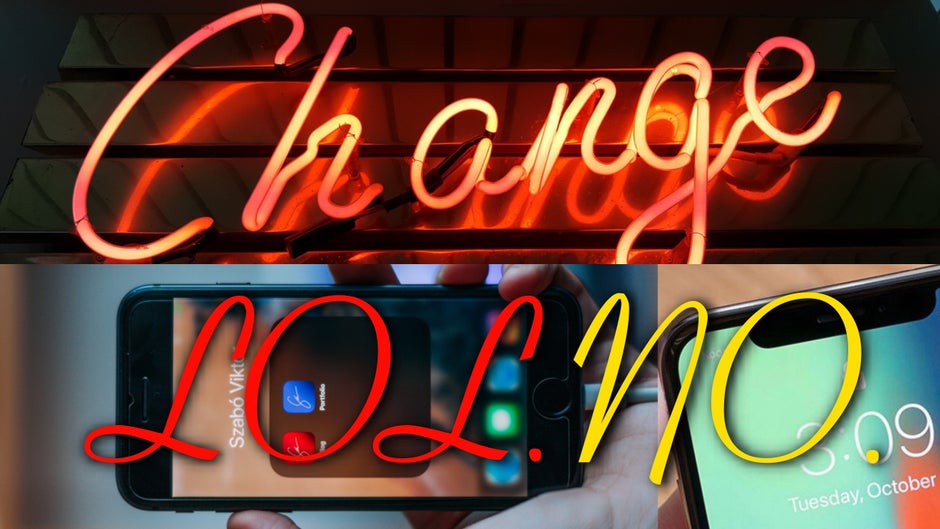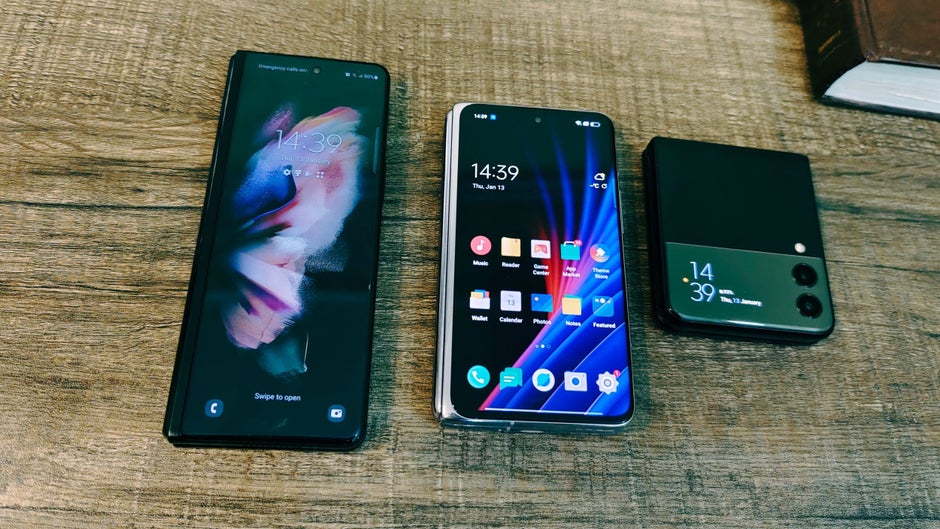iPhone Fold: Apple decides the future of foldables with help from Samsung, Oppo, Xiaomi
This article may contain personal views and opinion from the author.

January 6, Dylan, a well known Twitter leakster, shares some insight information about Apple’s plans for a foldable iPhone:
“For those who are curious about a foldable iPhone, Apple is definitely working and testing multiple prototypes that contain foldable displays. Too many compromises still exist with foldable display technology, though.
There are also concerns as to whether foldable smartphones will continue to have a place in the market or will fall into obsolescence. Therefore, Apple is intent on carefully observing the market and improving upon the mistakes of their competitors.
While other manufacturers are iterating on products that are seemingly in beta, Apple is keen on making sure that the design is not a regression from the current form factor of the iPhone. They are interested in playing the long game to see how the technology progresses.”
If you’re simply interested in the “foldable iPhone”, you’d be glad to find out that Apple is working and testing iPhone Fold prototypes. However, the key takeaway from those few paragraphs might help us answer one very long-standing question.
Is Apple slow at innovation, or is Android too quick at it?

While Apple’s “long game” strategy when it comes to innovation isn’t news by itself, the past couple of years have taught us much more than we used to know. Apple is in a unique position in the smartphone market. However, it didn’t just so happen that the company found itself in this place. It’s business. And the current boom in foldable smartphone production does Apple another favor that the company didn’t directly ask for but is happy to get. Luckily, Android seems to always be happy to help.Why do you think a company with some of the brightest engineering manpower, software expertise, and a proven track record in doing business (Apple’s the highest-valued company in the world) is suddenly “failing” to join the foldable market and dominate it? As Dylan mentions, Apple has real concerns as to whether the foldable smartphone is “it”.
Just think about all the compromises with foldables in 2022:
- Big foldables feel like two regular phones stacked together – much bulkier and heavier than a slab phone.
- The multimedia experience (supposed to be one of the main selling points) is compromised by things like apps that aren’t made to fit devices with unconventional screen ratios and videos that don’t fill up the entire screen. As a result, foldable provides virtually the same multimedia experience as a big slap smartphone. Save for games. Gaming on a foldable is mostly awesome.
- Foldables are generally more fragile and, therefore, much less durable than standard phones.
- Folding phones are only partially or not at all dust/water-resistant.
- They feature above-average camera systems at best due to the lack of space for bigger sensors and more complex camera hardware.
- Last but not least, they are still (extra) expensive, although not as expensive as they once were
So, I believe it comes to no one’s surprise that Apple carefully observes the foldable market, watches and takes notes after assessing the rights and wrongs, made by the competition. Android is doing Apple’s dirty work. Not literally.
Foldables in 2022: Xiaomi, Oppo, and Honor are on the move after Samsung and Huawei paved the way

The Galaxy Z Fold 3 might just be the least practical foldable on the market right now.
We also have companies like Xiaomi, Oppo, and Honor that took their time to observe Samsung’s attempt to nail the foldable, and are now on the move. Xiaomi’s Mi Mix Fold is almost half the price of the Galaxy Z Fold 3.
This proves two important things:
- Being a spectator in the foldable market pays off, as you can often make a better device without rushing to launch the first semi-ready finished product.
- Apart from learning from Samsung, progressive Chinese companies are only further facilitating Apple’s voyeuristic plan. Cook and company can see how people react to new concepts and ideas; how much money they are willing to spend on them and then… make a move, or you know – not make a move.
Apple has a long history of counting (and waiting) on Android to do its market research

That’s right. This is not the first time something like that is happening. Here are a few features that Apple patiently waited to see the development of and then brought to the iPhone. Again, the pilot study was done on a number of Android phones. In a way Android has searched as a free market research agency for Apple:
- Phablets – iPhone 6 Plus, Apple’s very first “phablet,” came out very late, compared to big Android phones, but until today, exactly the iPhone 6 series is the best-selling lineup of smartphones ever. Good timing?
- A dual-camera system – the iPhone 7 Plus was two years late, compared to the HTC One M8, but it brought a much more usable Portrait Mode, as well as optical zoom.
- A triple camera system – again in a similar fashion, the iPhone 11 Pro series were late to the party but came with smooth lens transitions and unified colors across the lenses – something with which some Android phones often struggle, even in 2022
- Night Mode – Huawei was the first to introduce the modern Night Mode in 2018, while Apple patiently waited about a year and a half to bring the feature to the iPhone 11 series. However, the iPhone’s Night Mode was arguably the most balanced and natural one amongst all phones – probably still true today.
- Widgets – Apple waited forever to bring widgets to iOS, but when it did – Android 12 quickly borrowed their look. I can’t say they are copied. Inspired is the word.
- Face Unlock – Believe it or not, Android 4 had a gimmicky Face Unlock feature back in 2011. Apple’s iPhone X adopted Face ID in 2017, but it was a gazillion times better and more secure than anything Android had to offer. And that comes from someone who prefers fingerprint scanners.
- “Bezel-less” design – Sure, iPhones up until the iPhone 8 had massive bezels. Meanwhile, Samsung and company worked year by year to get higher and higher screen-to-body ratios. However, again the iPhone X, came out and immediately set the standard for the “bezel-less” dream. Yes, yes, yes… the notch. But if you could live with the notch (as millions do), the iPhone was the only phone to offer you equally-sized bezels on all sides. It just looked… right.
Is Android wasting time and resources by betting on the foldable: What is “the next big thing”?

I don’t know…
Am I saying Android manufacturers should stop making foldables? Definitely not. Am I saying that Apple will determine the fate of the foldable phone, depending on whether it decides to make one or not? Probably. Daniel seems to agree with me. That makes two pretty average PhoneArena writers with a weird take on something.
What if rollables or even AR/VR is “the next big thing”? Apple is expected to enter the latter market with its own AR/VR headset either this or next year, which will undoubtedly make the market piping hot.
Is Android wasting valuable time and resources by betting on the foldable? Leave a comment!
For all the latest Technology News Click Here
For the latest news and updates, follow us on Google News.
